I will lay it out as it is first. Setting up a garden will cost you at first. It takes some money to construct a garden, put a fence around it, to purchase good soil, fertilizer, and compost. And yes, gardening is hard work. But if you enjoy it and have a vision in front of you, after your soil is built, you learn a few gardening tricks and come across some failures and successes, all the investment will be returned to you for years to come! Plus, gardening is a skill, you will learn a life skill that is priceless. And if you have children, you will be able to pass down the legacy of wisdom to the next generation.
The best food to grow to save money is the food that you eat regularly, and purchase frequently, food that is more expensive compared to affordable produce, yields high yields, and is easy to preserve or store. Produce like potatoes, tomatoes, onions, carrots, bell peppers, broccoli, cucumbers, and lettuce are some of the most purchased vegetables that one can grow to save money. Food that is more expensive than you can actually grow yourself includes fruit, spinach, okra, corn, squash, and Brussels sprouts. Vegetables easy to grow, and store, and that produce high yield are beans, leafy greens, tomatoes, zucchini, cucumbers, potatoes, carrots, onion, and garlic.
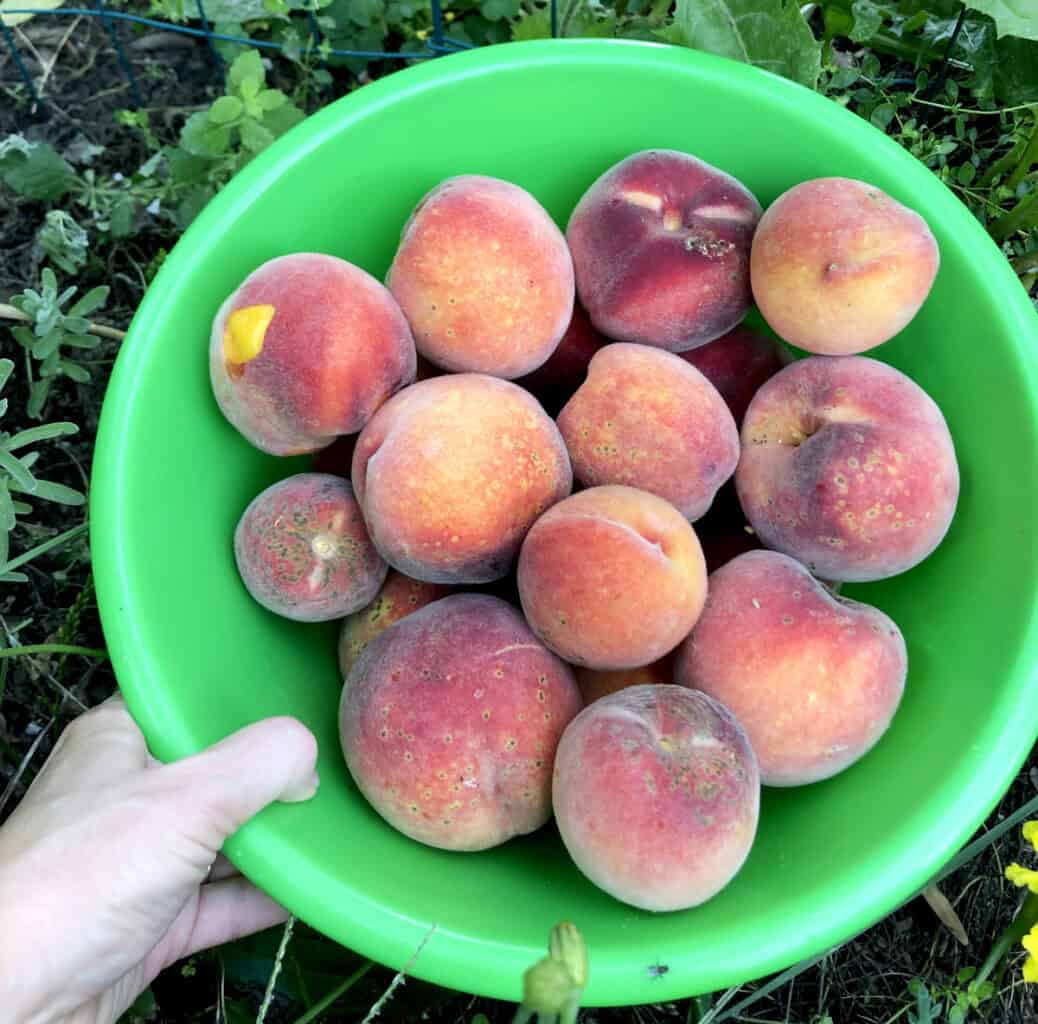
Fruits, nuts, and vegetables are some of the most expensive items at grocery stores. All these can be grown in your own garden to save you some money.
What is the most cost-effective food to grow?
Some of the most cost-effective food to grow is the one you purchase most frequently and those that are easy to grow and have high yields such as tomatoes, zucchini, squash, lettuce, green beans, onion, carrots, herbs, berry bushes, fruit, and nut trees.
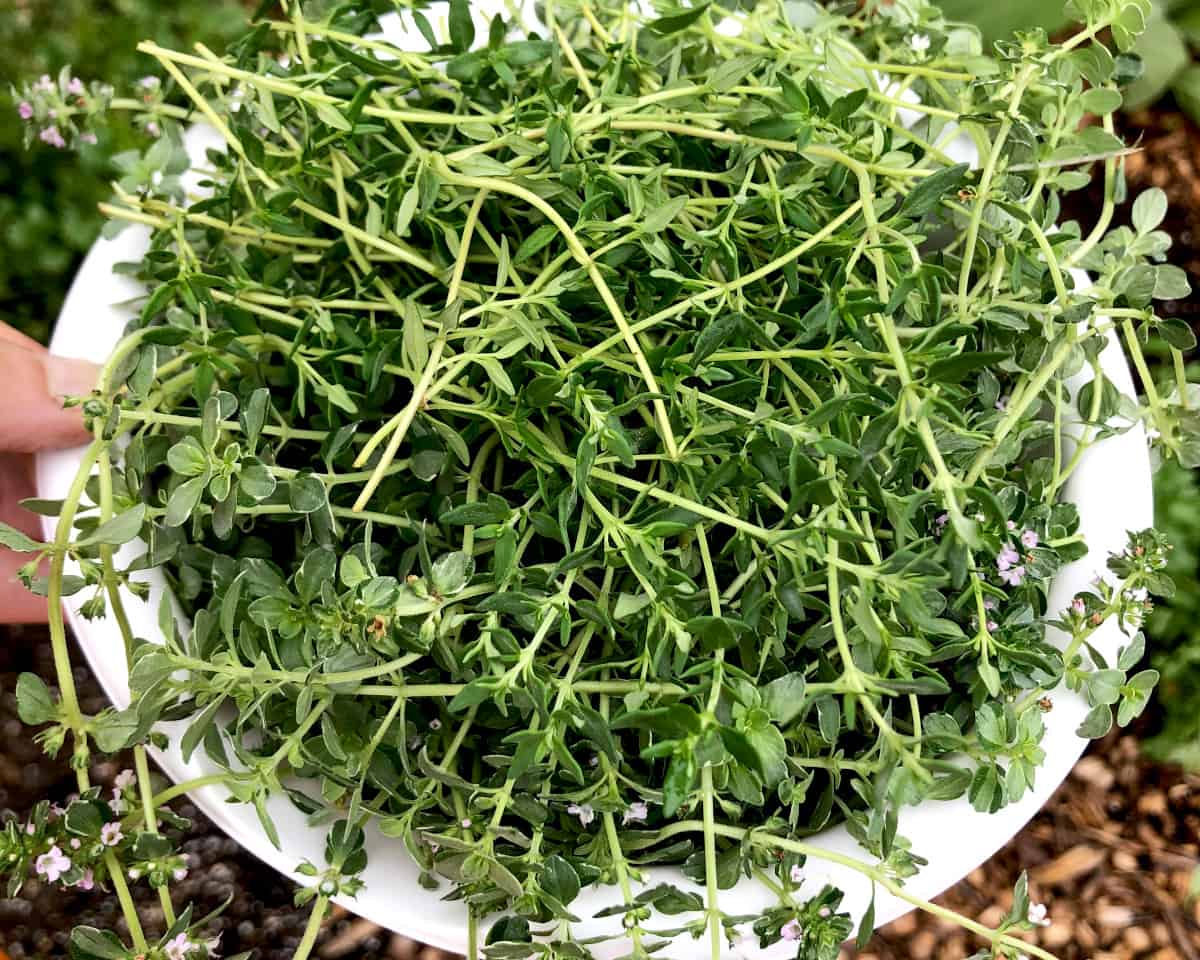
One of the most important purposes of a pantry staple garden is to grow food that you frequently purchase and that your family enjoys eating most. If your pantry is filled with the food you pay for most, then your expenses on food will go down. Yes, it requires some workload. The plants will not grow on their own, and the garden will not care for itself. But the reward will be a full pantry of produce you enjoy eating.
I frequently find myself “shopping” in my pantry. Every time I enter my pantry and find what I am looking for, I just save some money! I also saved a trip to the store, thus saving time. I saved gas money too. And the quality is much better because you know what actually went into your food.
I also like to shop in my garden. I like to pull fresh carrots and parsnips for the soup. I like to pick fresh salad leaves, tomatoes, and cucumbers for salad. And those amazing herbs in our dinner that made it from the garden to our plant, are priceless.
If you build a garden and fill your pantry from your garden, you will save money, because you will shop there, in your garden, and in your pantry.
For those busy moms and dads, just a note. You do not have to grow EVERYTHING! Start by growing something you find yourself purchasing the most at the grocery stores. I remember walking with a shopping cart and picking up carrots, salad, onions, and potatoes, and it shook me! Wait, I can grow all these myself, why do I buy these every week and pay for them when I can grow them? This experience and realization changed a lot.
Also remembering that my dear mom barely purchased anything for Sunday meals, because everything she need was found at our home. As the youngest child, it was my turn to serve, and she often sent me to the garden saying, “Bring me 3 carrots,1 parsley, and 1 onion,” as she was preparing the soup.
I also remember coming home from school and going directly into the garden to have some fruit lunch! I ended up eating blackberries, cherries, peaches, apricots, raspberries, currants, and nuts, whatever was in season. I always ended up full! This was frequently my lunch. I loved the experience. I naturally knew how food grows, what plants of certain foods look like, and where meat and milk come from. I also want to teach the generation that comes after me where all the food comes from and how delicious is a home-grown tomato and strawberries. There is nothing like it at the store.
And I wish my children to experience what I experienced, the feeling I ran from a school bus to the garden to eat. I was so excited and thrilled wondering what goodies will I find today. I want my children to experience picking homegrown peaches and their juice running down their chins. Having red, sticky marks around the mouth from berries. Shirts marked with mulberry juice. Getting scratches from picking blackberries, because they are worth every scratch as you reach into the bush to get the biggest and darkest one knowing exactly how it will taste in your mouth. I want my little ones to check those every day those apples if they are ready to pick and bite into them. And every autumn I want them to get impatient watching those apples turn red and juicy.
There are memories that can’t be bought, only earned. Harvesting and eating from the garden is one of those memories that need to be earned, and they are so worth it!
Please share with me and the readers what are some of the most priced garden memories you carry with you and/or would like your children experienced as well.
How can I grow my own food cheaply?
- Start plants from seeds. Seeds are cheaper than seedlings.
- Have a grow light set up, or use the sunniest best, south-facing window. Create a cheap grow light system.
- Save on seeds by saving your own seeds from your own grown produce. Later on, you can also exchange seeds in gardeners’ groups. Look for free seeds online, or in local libraries and seed banks. Plants can also be exchanged for seeds in gardeners’ groups.
- Reuse seed starting containers
- Set up an inground garden or a no-dig garden to save on material and soil
- Start a compost pile
- Reuse spent garden soil.
- Use any free resources like leaves, grass clippings, and weeds to make compost, fertilizers, leaf mould, and compost tea or compost extract.
- Get free manure from neighbors, and local farms.
- Use free material to stake plants like branches or a fence.
- Use household items to tie the plants up like stretchy strips made from an old T-shirt, or socks.
- Mulch the soil with free mulch that can be delivered from tree companies. They always look for someone to deliver free mulch to. Make free mulch using shredded dry leaves. Leaves can be shredded with a weed wacker. Or collect compost and leaf mould in your local forest if possible.
- If using city water, collect and use rainwater instead to save money.
- Use your old clothes and shoes to garden, so you don’t have to buy gardening clothes and shoes.
- Use young trees or young bendable branches for hoops.
- Use old bedding sheets and tablecloths as frost covers.
- Use painter’s plastic, plastic paint drop cover, or old shower curtains as plastic cover to create a greenhouse. Old windows and glass doors can also be used to create a greenhouse.
- Use shopping bags instead of growing bags and kiddie pool as raised beds.
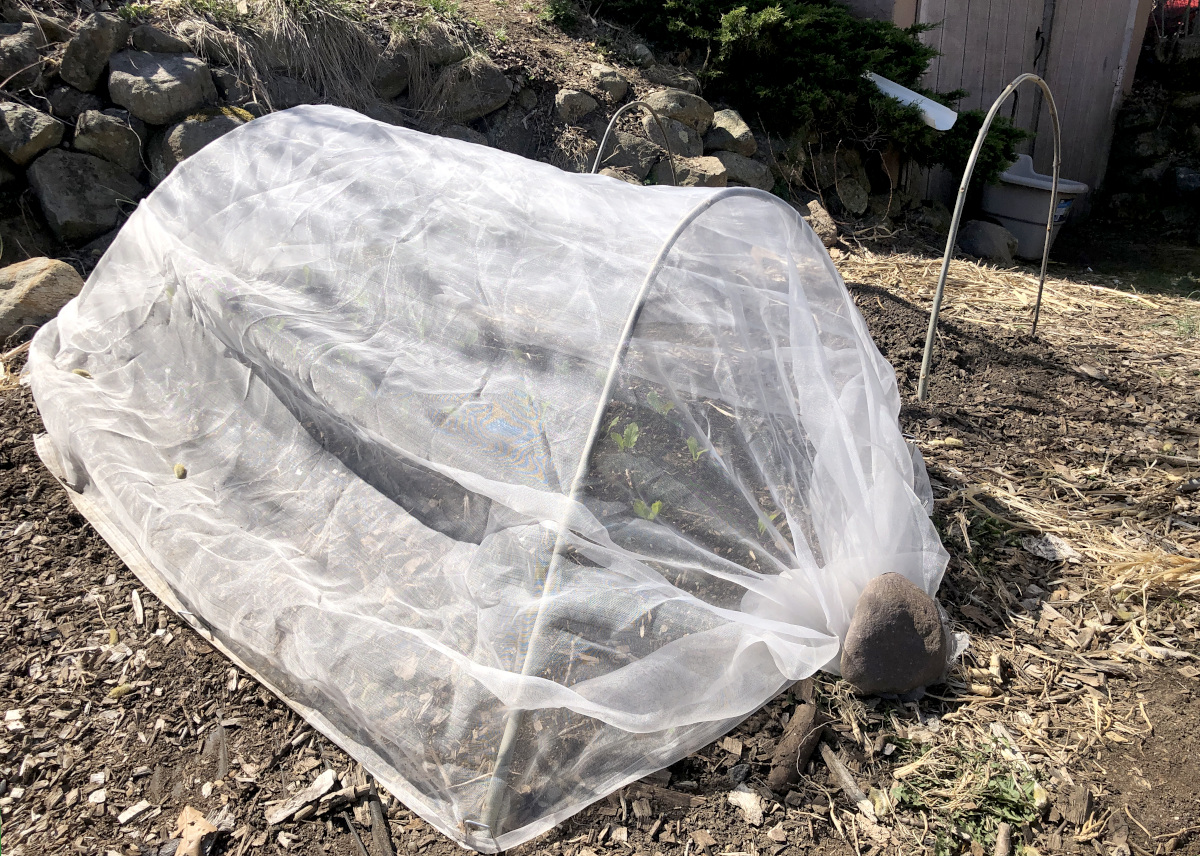
Is it cheaper to buy or grow food?
Growing high-yielding vegetables such as tomatoes, zucchini, carrots, garlic, and more costly vegetables like bell peppers, herbs, and berries, is cheaper to grow than buy. Other vegetables that are cheap to buy in bulk like potatoes, onions, sweet potatoes, corn, peas, and beans might be cheaper to buy than grow, especially when growing on a small lot or in limited spaces.
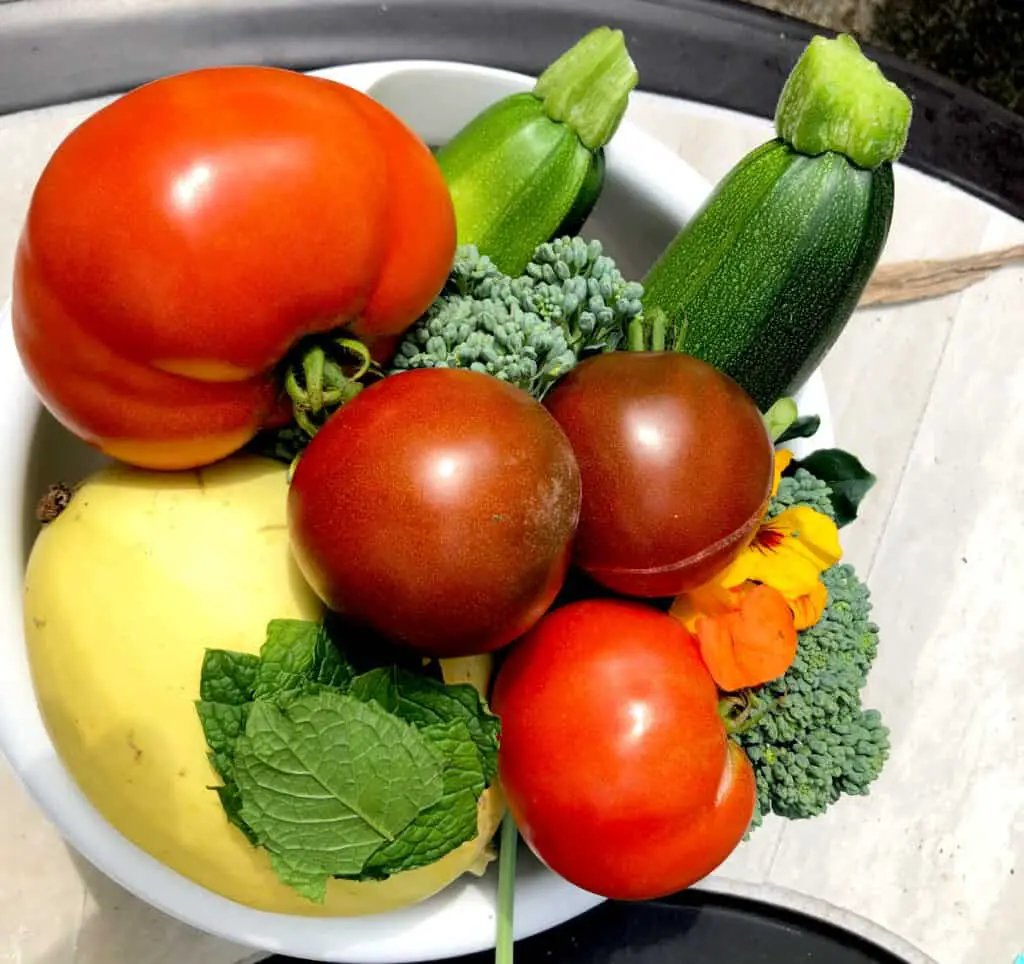
To find out what vegetable is worth growing and what is worth rather buying I would advise every home gardener, especially the novices to make a list of vegetables and fruit that your family eats frequently and that you buy the most. Then compare the prices and pick which one is cheaper to buy and which one is costly and perhaps more worth growing.
I like to grow something I purchase frequently and I know I would spend money on it every single week. In our house, it is carrots, onions, garlic, lettuce mix, Swish chard, broccoli, cauliflower, and tons of herbs. I prefer to grow these rather than buy them because they are relatively easy to grow and I have space to grow them. I can also harvest or store most of them for a long time.
There is also a vegetable that I prefer to buy because growing them requires a lot of growing space which I do not have available. I vegetables like peas, lentils, and most of our potatoes I prefer to buy.
Is it worth growing potatoes?
If one has enough space to grow and store them, potatoes are worth growing.
I do not have space to grow tons of potatoes. If I had space to grow them, I would definitely grow them in large. I still grow some potatoes but not as much as we need. I only grow a little bit if I have space for them. Thankfully, potatoes are not as expensive to buy, so I do buy them mostly. They are quite easy to grow and care for. Potatoes also store for a longer time and it is easy to store them. So if you have a large space and wish to grow potatoes, go for it!
Easy vegetables to start from seed indoors
What is the easiest food crop to grow?
What is the easiest food to grow for pantry storage?
Is it better to buy plants or seeds?
Starting plants from seed saves money especially when one grows a large garden and needs lots of plants and varieties. However, for those growing in a small space and in need of only a handful of starts, it might be worth it to buy seedlings instead of starting from seed, especially when buying plants that yield a lot like zucchini, tomatoes, bell peppers, herbs, and cucumbers.
I start my plants from seeds because I enjoy it, I like to learn how to grow food from seeds, and I like varieties and need lots of plant starts. It would be very costly for me to buy tens and tens of plants. But there are some plants I like to rather buy because I like them already well established and they take a long time to get there like rosemary and thyme. These are woody plants and they grow for a long time. I use these two herbs the most so I know I need a well-established, mature plant so I can harvest right away and often. It is better for me to buy these.
But tomatoes, zucchini, squashes, and lettuce I grow from seed because they are very easy and quick to sprout and grow.
I would say if in doubt, buy some and grow some. Later on, as you garden, you will learn what plants are worth for you to buy and what plants are more worthy to grow.
Vegetables not worth growing
Definitely do not grow vegetables that your family will not eat, do not enjoy eating, and that you never buy at the store. It does not matter how easy or cost-effective it is to grow certain vegetables, if no one eats it, it is not worth growing. Do not grow vegetables that are very cheap to buy at the store, rather plant those that cost more to save money on. Do not grow vegetables that get easily destroyed by pests in your area. And do not grow vegetables that require too much work, too much fussing, too much space, too much care, and/or too much time but do not yield much. For these reasons, brussels sprouts, corn, asparagus, watermelon, potatoes, onions, artichokes, cauliflower, cabbage, broccoli, and peas, have been most frequently named vegetables by home growers that they do not prefer to grow.
Can you really save money by growing your own food?
Yes, you can save money growing your own food, but it will take time and effort to do so. There is no such a thing as a garden with no effort, and no investment. It might also take a few years while one learns the skill, built the soil quality, and learns to care for plants correctly to reflect that the money was finally saved. One might not save money the first year, because building a garden requires some purchases, depending on what garden one builds. Usually by the second and third year, the money is not only returned to you but also saved.
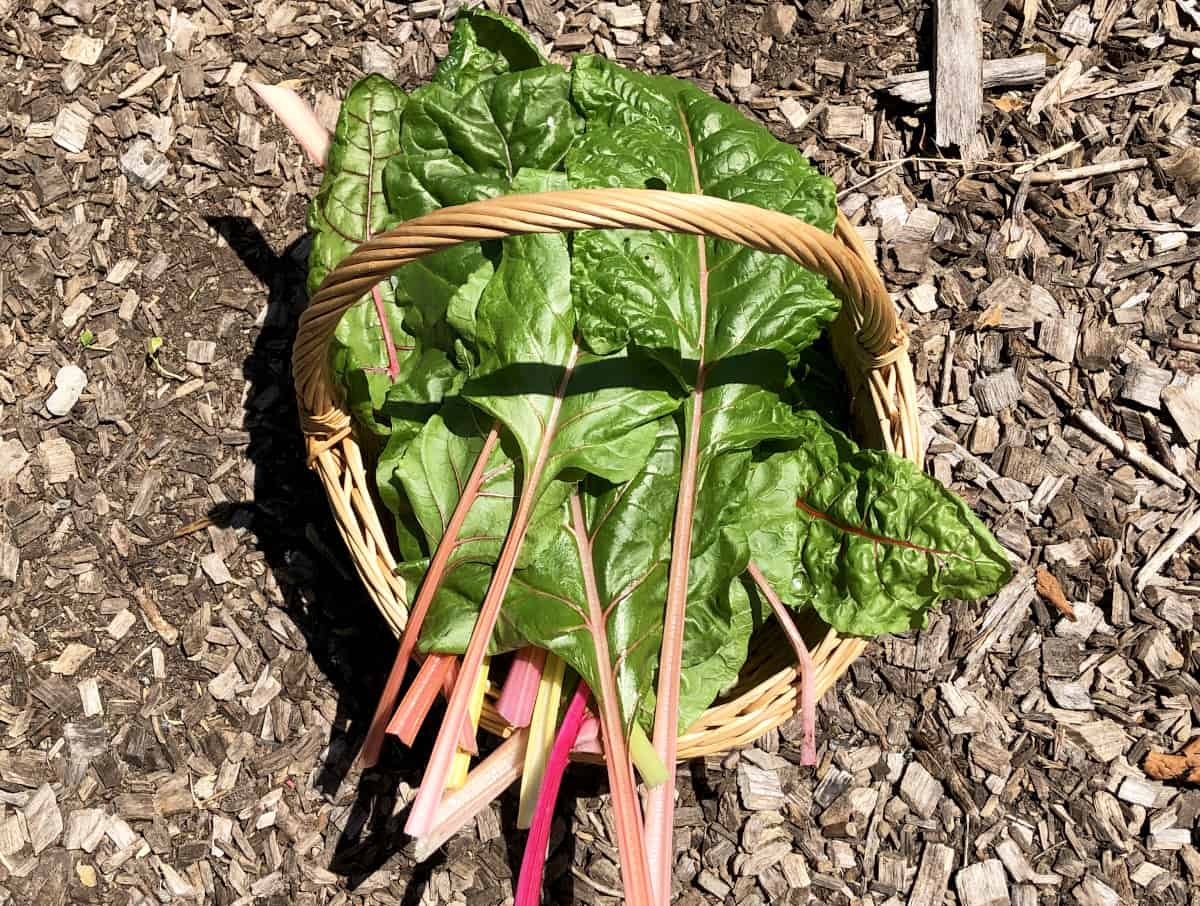
Gardening is not a quick fix to your budget. It does take time, experience, and some money to start a garden and produce food. From my own experience, I did not save any money during my first and second years. But I enjoyed gardening and harvesting what I could from my garden. I also knew that I did not have much to harvest because I significantly lacked gardening knowledge, experience, and wisdom. Once these kicked in and I learned from my mistakes, the production increased and I started to save some money.
The more knowledge and experience gardening the more money one saves. Also, the workload is less year by year as one learns the tricks of how to make things easier while accomplishing the same tasks.
Share with me, what foods you grow to save money and what other vegetables and fruit are that you will not grow because it is not worth it for you. I like to read responses as we all have different grooving conditions, climates, and pests to deal with, and therefore results and preferences will vary for each one of us.
Easy vegetables to start from seed indoors
What vegetable can be harvested in one month?
Most high–yielding fruits and vegetables to grow in pantry stocking garden

